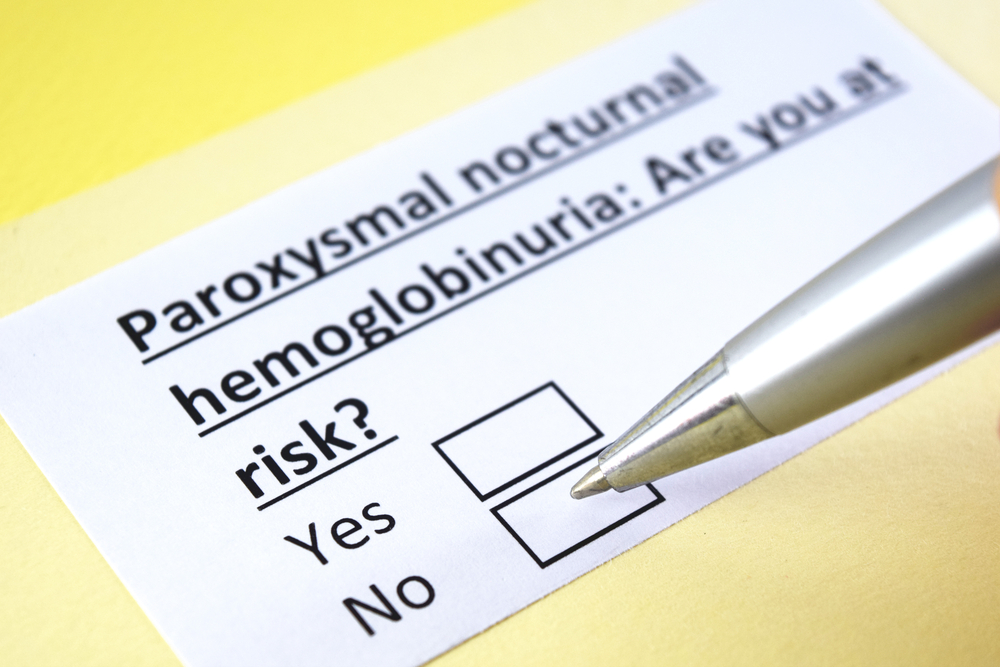Hemoglobinuria is a condition characterized by the presence of free hemoglobin in the urine. Normally, red blood cells remain intact as they circulate, ensuring hemoglobin stays within them. When red blood cells break down prematurely—a process known as hemolysis—hemoglobin is released into the bloodstream. The kidneys filter out this excess hemoglobin, which then appears in the urine, often giving it a dark or reddish color. While hemoglobinuria may be temporary, such as after intense exercise, it can also indicate more serious medical conditions like Paroxysmal Nocturnal Hemoglobinuria (PNH). Understanding its causes and symptoms is essential for early diagnosis and treatment.

Early Symptoms and Red Flags
Hemoglobinuria often manifests through visible changes in urine color and other systemic symptoms. Recognizing these signs early can prevent further complications. Common indicators include:
- **Dark or reddish urine:** Typically most noticeable after periods of rest, such as first thing in the morning.
- **Fatigue and weakness:** Caused by reduced red blood cell levels and diminished oxygen transport.
- **Shortness of breath or dizziness:** Particularly during physical activity, as a result of anemia.
- **Abdominal or lower back pain:** This may signal kidney involvement or blood clots, particularly in conditions like PNH.
Some people may ignore these symptoms, assuming they are unrelated or minor. However, dark-colored urine, even if temporary, warrants medical attention. For a detailed look at early warning signs, visit this resource from the Cleveland Clinic: PNH: Symptoms & Treatment.
Common Causes of Hemoglobinuria
Several factors can lead to hemoglobinuria, from benign conditions to serious medical issues. Some of the most common causes include:
- **Paroxysmal Nocturnal Hemoglobinuria (PNH):** A rare genetic disorder that causes red blood cells to break down prematurely. Learn more from MedlinePlus Genetics: Paroxysmal Nocturnal Hemoglobinuria.
- **Infections:** Diseases like malaria can cause widespread red blood cell destruction.
- **Mechanical trauma:** Conditions such as prosthetic heart valves can damage red blood cells as they pass through the circulatory system.
- **Exercise-induced hemoglobinuria:** Temporary hemoglobinuria may occur after extreme physical exertion, though it usually resolves on its own.
- **Other hemolytic disorders:** Conditions such as autoimmune hemolytic anemia and hereditary spherocytosis can also lead to hemoglobinuria.
By identifying the underlying cause, healthcare providers can develop a targeted treatment plan to address the condition effectively.
Complications of Untreated Hemoglobinuria
While hemoglobinuria itself is not always harmful, it can signal underlying problems that may lead to severe complications if left untreated. For example, PNH is associated with:
- **Blood clots:** A leading cause of death in PNH patients, often occurring in unusual locations like abdominal veins.
- **Kidney damage:** Persistent hemoglobin in the urine can lead to kidney dysfunction over time.
- **Chronic anemia:** Continued red blood cell destruction reduces the body’s ability to carry oxygen, causing persistent fatigue and other health issues.
To better understand the long-term effects of PNH and hemoglobinuria, refer to this study published on PubMed: Natural History of PNH.
How Is Hemoglobinuria Diagnosed?
Diagnosing hemoglobinuria involves a combination of patient history, physical examination, and laboratory tests. Key diagnostic tools include:
- **Urinalysis:** A simple test to detect the presence of hemoglobin in the urine.
- **Blood tests:** These can help identify hemolysis by measuring hemoglobin levels, bilirubin, and other markers.
- **Flow cytometry:** This specialized test is used to diagnose PNH by detecting abnormal red blood cells lacking certain proteins.
If you suspect hemoglobinuria, seek medical advice immediately. A comprehensive guide to diagnostic strategies is available on UpToDate: Clinical Manifestations and Diagnosis of PNH.
Treatment Options
Treatment for hemoglobinuria depends on the root cause. Common approaches include:
- **Medications for PNH:** Drugs like eculizumab and ravulizumab help reduce red blood cell destruction and prevent blood clots.
- **Managing underlying infections:** Antibiotics or antiviral medications may be required to treat infections causing hemolysis.
- **Hydration:** Adequate fluid intake helps flush excess hemoglobin from the kidneys and prevents further damage.
- **Bone marrow transplant:** In severe cases of PNH, a bone marrow transplant may offer a potential cure.
For more information about treatment options, explore this resource from the National Organization for Rare Disorders: PNH: Symptoms, Causes, and Treatment.
Living with Hemoglobinuria
Living with hemoglobinuria, particularly if caused by chronic conditions like PNH, requires ongoing care and lifestyle adjustments. Some tips for managing the condition include:
- **Regular check-ups:** Work with a hematologist or nephrologist to monitor your condition and prevent complications.
- **Maintaining hydration:** Drinking enough water can help protect kidney function and minimize the impact of hemoglobin in the urine.
- **Iron-rich diet:** Include iron-rich foods like leafy greens, lean meats, and legumes to combat anemia caused by red blood cell destruction.
With early diagnosis and proper treatment, individuals with hemoglobinuria can often manage their symptoms effectively and maintain a good quality of life.
